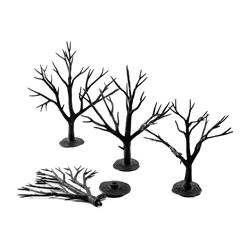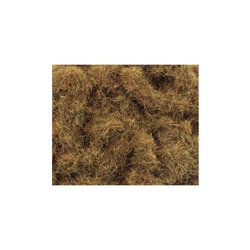A tank wagon or tanker is a type of railway wagon used specifically for transporting liquids or gasses.Tank...
No products
Product successfully added to your shopping cart
There are 0 items in your cart. There is 1 item in your cart.
Search Tips
What are my options for modelling deciduous trees in winter?
There are a number of options available to Modellers when it comes to modelling deciduous trees in winter for a layout. Here are some suggestions:
Bare Branches: During the winter season, deciduous trees lose their leaves, leaving behind bare branches. This can easily be created by using bare branch armatures or wireframes which are readily available in most Model Shops or online. These armatures can then be attached to a base or scenery board and painted with appropriate shades of brown or grey to mimic the appearance of bare winter branches.
Winter Foliage: Some deciduous trees retain a portion of their foliage during the winter, albeit in a dormant state. For this effect, Modellers can use commercially available tree kits or individual tree armatures designed specifically for winter foliage. These kits often come with fine-scale foliage material, such as static grass or tufts, that mimic the appearance of dormant leaves. By carefully applying and shaping the foliage material onto the armatures, a Modeller can achieve a realistic winter foliage effect.
Dried Leaves and Ground Cover: Another option is to simulate the presence of fallen leaves on the ground around the trees. This can be achieved using appropriate scatter materials, dried tea leaves or even real dried leaves from nature to create this effect. The material can then be scattered around the base of the trees, ensuring a natural distribution that mimics the accumulation of fallen leaves during winter.
Weathering Effects: The winter realism of trees on a layout can be enhanced by applying weathering techniques, such as the use of dry brushing with lighter shades of grey or white to create a subtle dusting of snow on the branches and foliage. This can also be enhanced by adding a thin layer of scenic glue or a specialized snow effect product to simulate a more prominent snow covering.
Modellers should bear in mind the scale of the layout and adjust the size and density of the tree models accordingly. It's also a good idea to observe and study real-life winter trees to help capture their unique characteristics and replicate them accurately on the layout.
Click here to receive the tips weekly in your mailbox. You can unsubscribe at any time.










